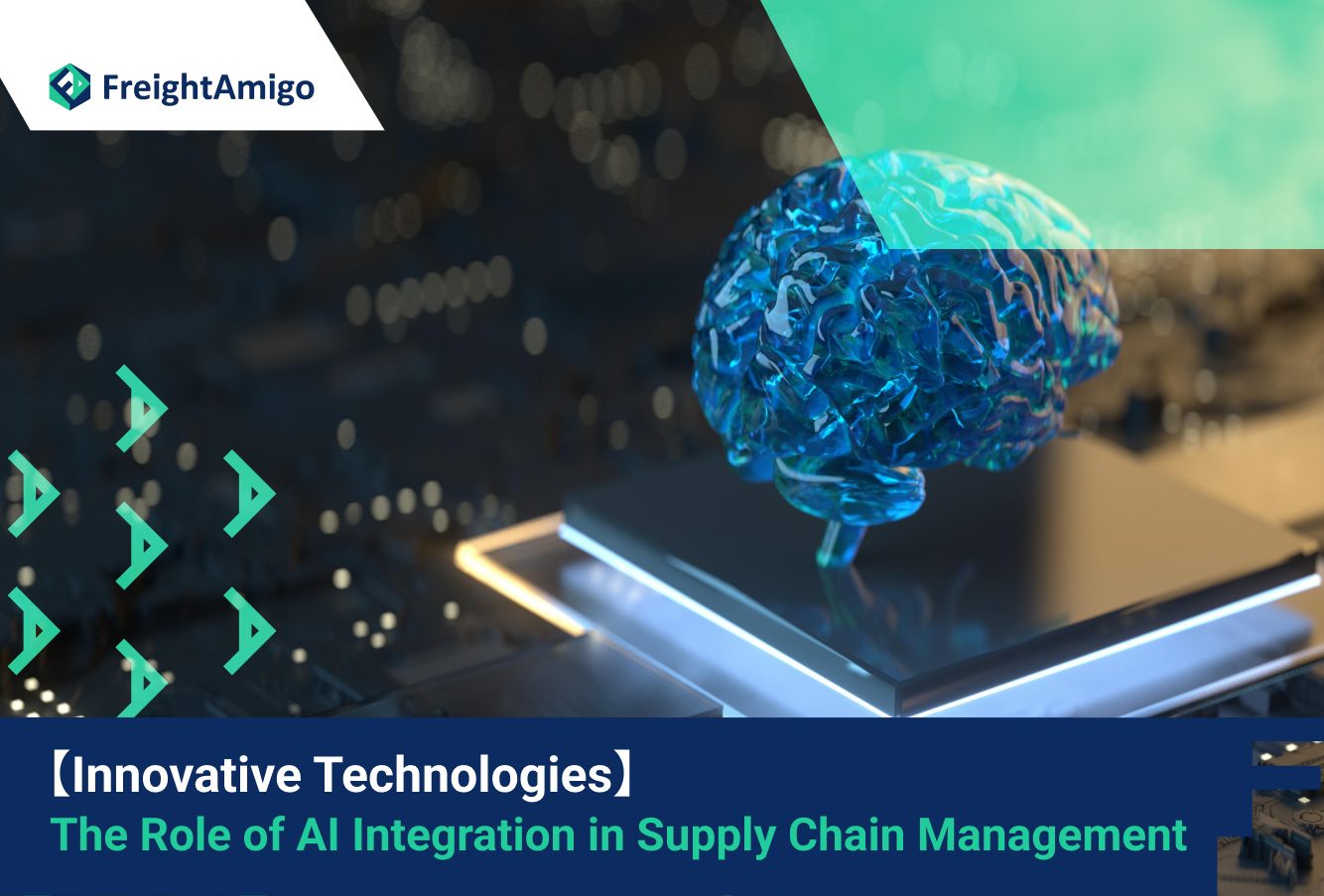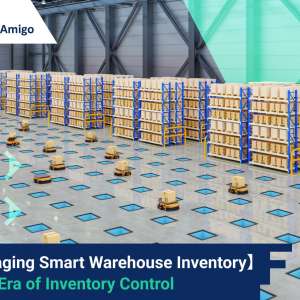Author Name: Tiffany Lee – Marketing Analyst at FreightAmigo
In today’s fast-paced and ever-evolving business landscape, supply chain management plays a critical role in ensuring operational efficiency, customer satisfaction, and competitive advantage. To stay ahead of the curve, organizations are turning to artificial intelligence (AI) integration to revolutionize their supply chain processes and optimize demand forecasting. This article explores the significance of AI integration in supply chain management, its benefits, and how it is transforming the industry.
Want To Compare The Best Express, Air Freight, Sea Freight, Rail Freight & Trucking Rates So As To Have Better Control On Cost?
Understanding Demand Forecasting and its Challenges
Demand forecasting is the process of predicting customer demand for products or services based on historical data, market trends, and various influencing factors. Traditionally, businesses relied on manual methods and basic statistical models to forecast demand. However, these methods were limited in their ability to accurately capture the complex dynamics of today’s markets. The advent of AI integration has revolutionized demand forecasting by leveraging machine learning algorithms to analyze vast amounts of data and generate more accurate predictions.
The Benefits of AI-powered Demand Forecasting
AI-powered demand forecasting brings a multitude of benefits to supply chain management, enabling organizations to make informed decisions and optimize their operations. Here are some key advantages:
Enhanced Accuracy and Precision
AI algorithms can analyze large volumes of historical data, market trends, and external factors to generate highly accurate demand forecasts. By considering various variables and patterns, AI integration eliminates the limitations of traditional forecasting methods and provides more precise predictions. This accuracy enables organizations to optimize inventory levels, minimize stockouts, and reduce excess inventory.
Real-time Data Insights
AI integration allows organizations to access and analyze real-time data from various sources, such as customer behavior, social media trends, and market conditions. By capturing and processing this data in real-time, businesses can identify emerging demand patterns, respond swiftly to market changes, and make data-driven decisions to meet customer demand effectively.
Efficient Resource Allocation
With AI-powered demand forecasting, organizations can optimize resource allocation across the supply chain. By accurately predicting demand, businesses can align production schedules, procurement activities, and distribution processes to meet customer requirements while minimizing waste and inefficiencies. This optimization leads to cost savings, improved operational efficiency, and enhanced customer satisfaction.
Mitigation of Supply Chain Risks
AI integration enables organizations to identify and mitigate supply chain risks proactively. By analyzing historical data and market trends, AI algorithms can identify potential disruptions and enable businesses to take preventive measures. This proactive approach helps organizations minimize the impact of disruptions, optimize inventory management, and ensure a seamless flow of products through the supply chain.
Enhanced Customer Experience
Accurate demand forecasting facilitated by AI integration enables organizations to improve the customer experience. By ensuring product availability, businesses can meet customer demands promptly, minimize stockouts, and provide a seamless purchasing experience. This enhanced customer experience strengthens brand loyalty, increases customer satisfaction, and drives business growth.
AI Techniques in Demand Forecasting
AI integration in demand forecasting relies on various techniques and algorithms to analyze data and generate accurate predictions. Here are some commonly used AI techniques:
Machine Learning (ML)
Machine learning algorithms form the backbone of AI-powered demand forecasting. ML algorithms analyze historical data, identify patterns, and learn from past trends to make accurate predictions. These algorithms can adapt to changing market conditions and continuously improve forecasting accuracy over time.
Predictive Analytics
Predictive analytics uses data analysis and ML algorithms to forecast future outcomes based on historical data. By identifying patterns and trends, predictive analytics can generate accurate demand forecasts and provide insights to support decision-making processes. These forecasts enable organizations to optimize their supply chain operations and plan for future demand fluctuations.
Natural Language Processing (NLP)
NLP techniques enable organizations to analyze unstructured data, such as customer reviews, social media posts, and online forums, to gain insights into customer preferences and sentiments. By understanding customer feedback and sentiment analysis, businesses can adjust their demand forecasts and tailor their products and marketing strategies accordingly.
Image Recognition
Image recognition technologies analyze product images and videos to understand consumer preferences and trends. By scanning online images and social media posts, organizations can identify popular products, assess demand patterns, and incorporate this information into their demand forecasts. This enables businesses to align their inventory levels with customer preferences and optimize their supply chain operations.
Internet of Things (IoT)
IoT sensors collect real-time data on various factors that influence demand, such as inventory levels, environmental conditions, and customer behavior. By integrating IoT data with AI algorithms, organizations can generate accurate demand forecasts and make informed decisions to optimize their supply chain processes. This real-time data analysis helps businesses respond quickly to changing market conditions and customer demands.
Real-world Examples of AI Demand Forecasting
AI-powered demand forecasting is already making a significant impact across various industries. Let’s explore three real-world examples:
Retail Industry
Retailers are leveraging AI integration to optimize their demand forecasting and inventory management processes. By analyzing historical sales data, customer behavior, and market trends, AI algorithms can generate accurate demand forecasts. This enables retailers to optimize their inventory levels, minimize stockouts, and ensure product availability to meet customer demands promptly.
Manufacturing Industry
Manufacturing companies are using AI-powered demand forecasting to streamline their production planning and resource allocation. By accurately predicting customer demand, manufacturers can optimize their production schedules, allocate resources effectively, and minimize waste. This optimization enhances operational efficiency, reduces costs, and improves overall supply chain performance.
Logistics Industry
Logistics companies are leveraging AI integration to optimize their supply chain operations and enhance customer satisfaction. By analyzing real-time data on factors such as transportation routes, delivery times, and customer preferences, AI algorithms can generate accurate demand forecasts. This enables logistics companies to optimize their delivery schedules, minimize delays, and provide a seamless customer experience.
Conclusion
AI integration in supply chain management, specifically in demand forecasting, is revolutionizing the way organizations operate and optimize their supply chains. By leveraging AI techniques such as machine learning, predictive analytics, and natural language processing, businesses can generate accurate demand forecasts, optimize resource allocation, mitigate risks, and enhance the customer experience. The benefits of AI-powered demand forecasting extend across various industries, including retail, manufacturing, and logistics. As organizations continue to embrace AI integration, they will gain a competitive edge, drive operational efficiency, and position themselves for long-term growth and success in the dynamic business landscape.
There Are Different Options For Cargo Transportation. If You Want To Choose The Most Convenient And Suitable Solution, It Is Best To Have The Full Support Of Logistics Experts! If You Are Planning To Ship Goods Overseas, Please Go To The FreightAmigo Page For Inquiries.
===
Read More:
【Cosmetic Product Recycling】 A Guide to Sustainable Reverse Logistics
【Rise of Green Supply Chain】 Pioneering Sustainable Practices in Logistics
【ESG in Logistics】 How ESG Practices Drive Social Responsibility in Logistics
===
If you have any inquiries on logistics/supply chain, feel free to contact FreightAmigo now:
Chat with us online OR
Phone : +852 28121686
WhatsApp: +852 27467829









































